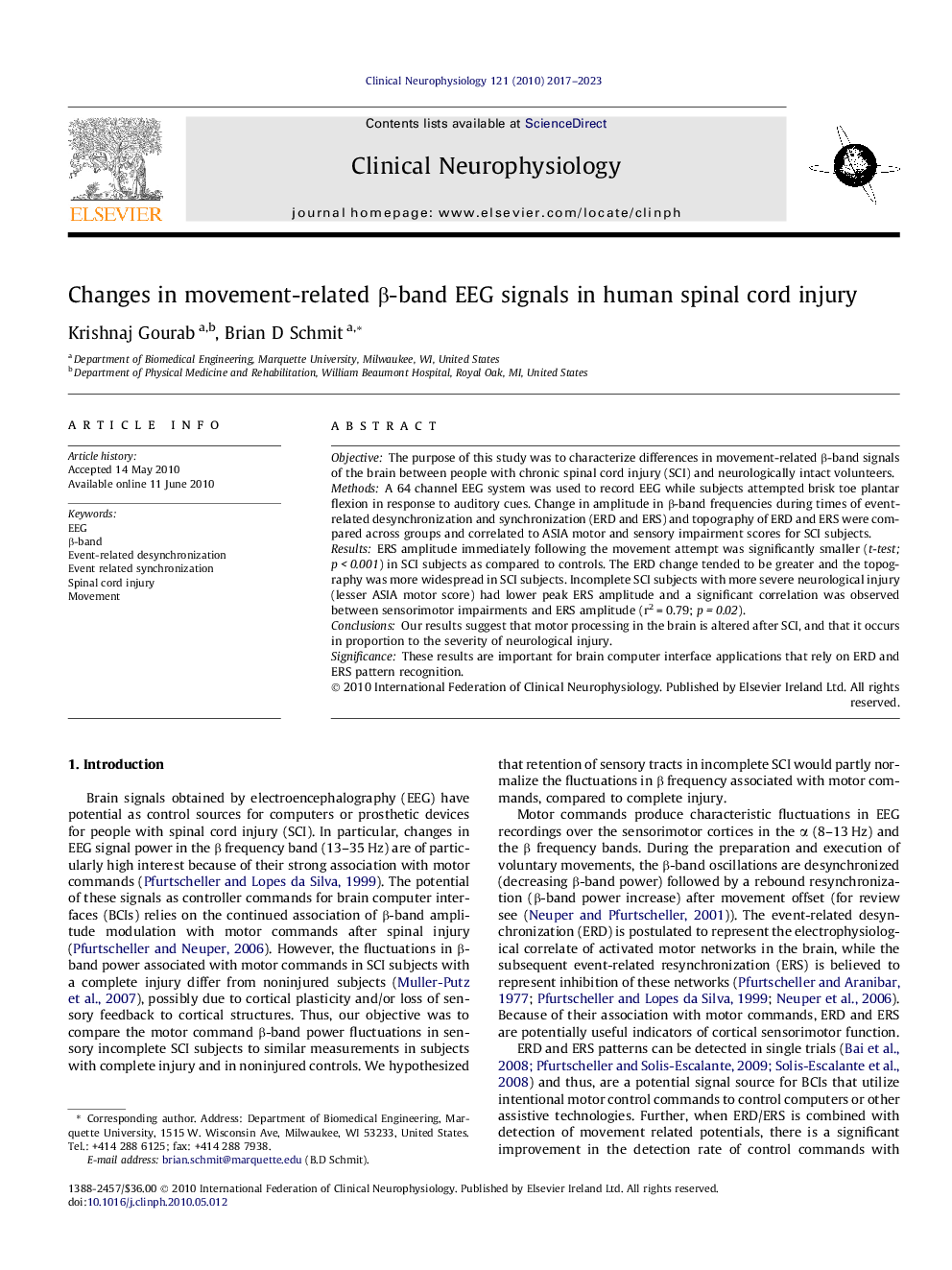| Article ID | Journal | Published Year | Pages | File Type |
|---|---|---|---|---|
| 3044427 | Clinical Neurophysiology | 2017 | 7 Pages |
ObjectiveThe purpose of this study was to characterize differences in movement-related β-band signals of the brain between people with chronic spinal cord injury (SCI) and neurologically intact volunteers.MethodsA 64 channel EEG system was used to record EEG while subjects attempted brisk toe plantar flexion in response to auditory cues. Change in amplitude in β-band frequencies during times of event-related desynchronization and synchronization (ERD and ERS) and topography of ERD and ERS were compared across groups and correlated to ASIA motor and sensory impairment scores for SCI subjects.ResultsERS amplitude immediately following the movement attempt was significantly smaller (t-test; p < 0.001) in SCI subjects as compared to controls. The ERD change tended to be greater and the topography was more widespread in SCI subjects. Incomplete SCI subjects with more severe neurological injury (lesser ASIA motor score) had lower peak ERS amplitude and a significant correlation was observed between sensorimotor impairments and ERS amplitude (r2 = 0.79; p = 0.02).ConclusionsOur results suggest that motor processing in the brain is altered after SCI, and that it occurs in proportion to the severity of neurological injury.SignificanceThese results are important for brain computer interface applications that rely on ERD and ERS pattern recognition.
